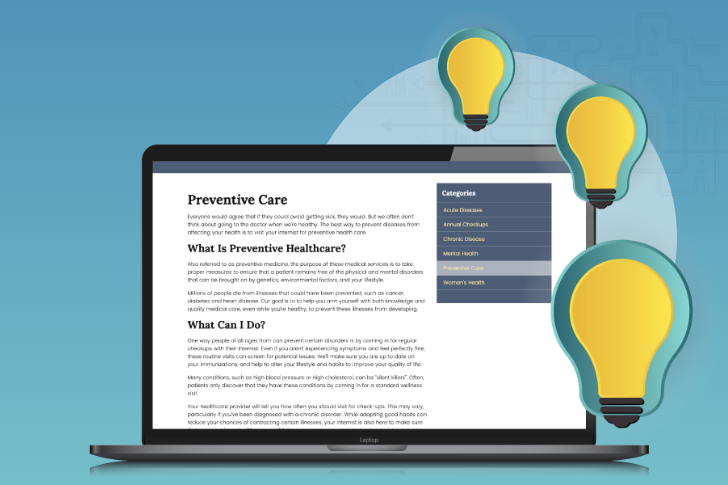Blogging: A Creative Outlet That Helps Your Practice
Many people have asked us how to blog as a creative outlet that also helps their practice.
But it’s hard to know where to start, what to write about, and how often to write.
We’ll go over a few questions you need to ask yourself and topics to get started.
For Best Results, Know Your Audience
Before you write, you need to know who you’re writing for. Content that is interesting and useful to your audience will keep them coming back.
Here are a few questions you ask can yourself:
-
What keeps them awake at night?
-
What fears could you help reduce?
-
What are health-related frustrations?
-
What are common health-related concerns they’re facing right now?
- What questions to they ask you most often?
Knowing what’s important to your patients will take the guesswork out of the “what do I write about?” question and help you create content that helps your patients.
How Often You Should Post
We recommend you post once or twice a month, at least. But if you want to make content a part of your marketing strategy, you should try to work your way towards weekly updates.
Articles of 1,000 – 2,000 words in length tend to rank higher on Google. If you can’t sustain that many times per week, shorter articles will still produce results.
The important thing is to create valuable content that patients want to engage with. If your patients value your content, so will Google.
Writing the Blog Article
After all this planning, you have to sit down and write your blog articles. This is the basic process you need to follow.
80% of the Power of Your Article Is in the Title.
If the title isn’t interesting, then it won’t get clicked – no matter how good the rest of the article is. There are many different types of titles, but if you want one that almost always works, go with curiosity.
Don’t Post Right Away
Let your article sit overnight before you post it on your blog. This lets your subconscious mind do its work. Give your mind time to churn over ideas you might not have thought of while you were writing the first draft.
After you let your article sit overnight, read through it one more time. See if everything still makes sense.
-
Is anything unclear or in need of more development?
-
Does the article flow well?
-
Is there anything that doesn’t support the main point of your article?
You want to look for anything that breaks your flow, doesn’t make sense, or seems out of place. Trust your gut on this one.
Get Started
There’s a lot to learn, but don’t let it overwhelm you. Choose one topic and start writing. Take things slow and don’t add too much at one time.
If you have any questions about blogging for your practice, contact Officite. We’d be glad to help.



